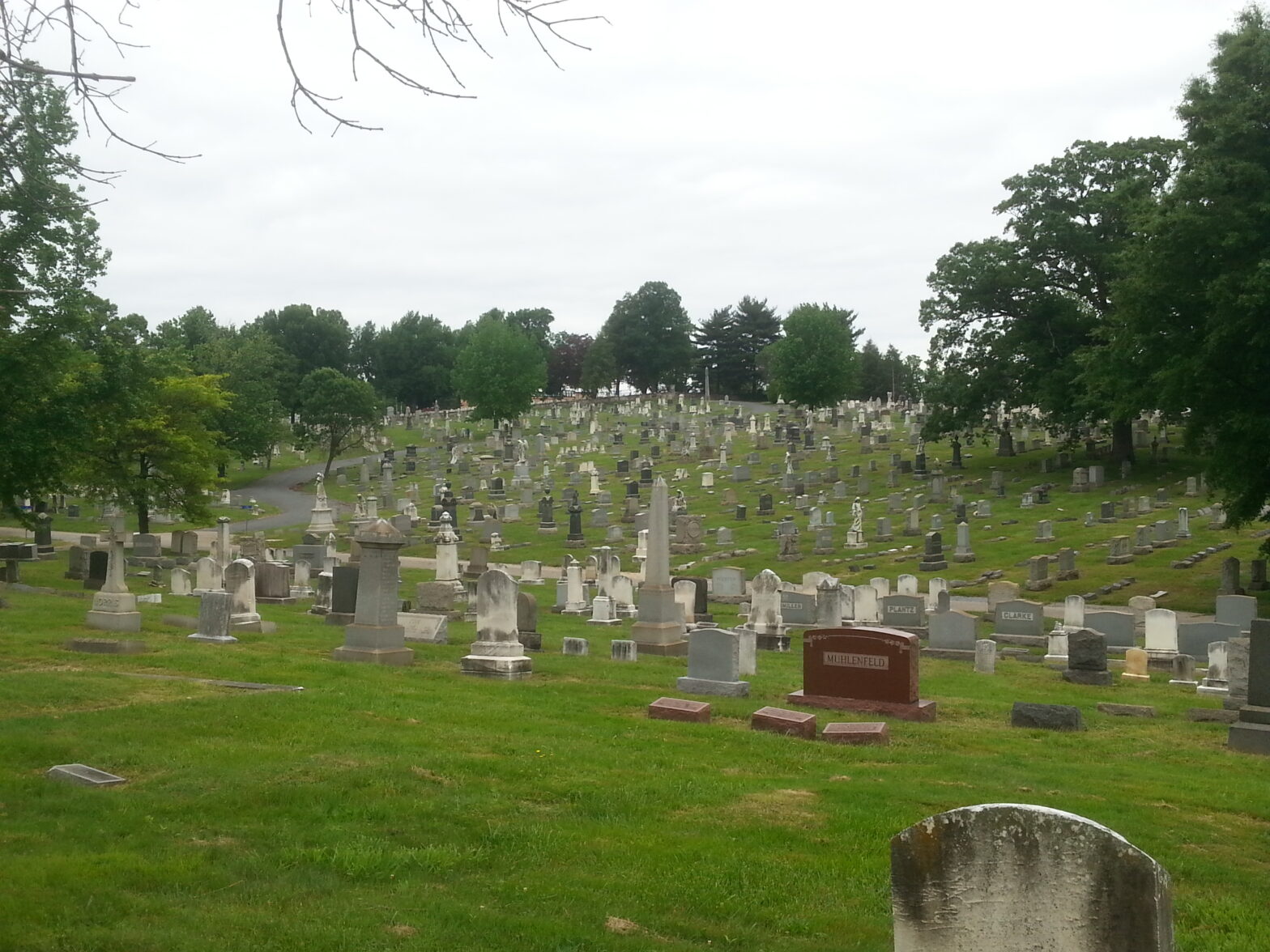Last weekend, after the Mid-Maryland Celtic Festival, I drove home by way of Eldersburg, mainly because it was easier to head north to Liberty Road instead of south to I-70. As I approached Eldersburg, I decided, entirely on a whim, to visit the church graveyard where my great-uncle and great-aunt are buried, coincidentally quite close to the anniversary of my great-uncle’s death.
I patted the headstone, like an adult patting a child’s head, put my hands on the ground where they were, sort of my way of saying “you’re remembered,” and continued on to home. And I decided that I would visit my grandfather’s grave in Baltimore the following Saturday, yesterday; the anniversary of his death was coming up, too.
I had the idea of making a day of it in Baltimore. I could do some other things I’d been meaning to do, and maybe I could go to the Orioles game and get the free Maryland flag jersey they were giving away. Well, going to the Orioles game didn’t happen; tickets for that game have been sold out for weeks, and though I checked Stubhub, Standing Room Only for 70 dollars-plus was flat out insane.
So, what were those “other things”?
I’ve wanted to visit Loudon Park Cemetery, where my grand-grandfather Allyn, after whom I’m named, obviously, is buried. I had been there, as best I can remember, once in my life, shortly after my grandfather’s funeral, a day or two later, when my mom and my grandmother took flowers from my grandfather’s funeral to my great-grandparents’ grave.
And I wanted to go to Peabody Heights Brewery, a craft brewer on the site of Oriole Park, the home of the International League Orioles, a minor league team who won seven consecutive pennants in the 1920s, a feat never repeated in professional baseball. They brew a line of beers called “Old Oriole Park.” Beer and baseball — how could I not?
Well, Saturday turned out to be the eighteenth anniversary of my grandfather’s death. Not in the ballpark. The exact day. So I was doubly glad I went.
I’ve been to my grandparents’ gravesite at Lorraine Park a number of times over the last eighteen years. My grandmother was interred there in 2011. The last time I visited was in the summer of 2013.
The most memorable, not for any good reason, is the time I brought my grandmother in August 2005.
Just past the trees is the “Gardner” headstone.
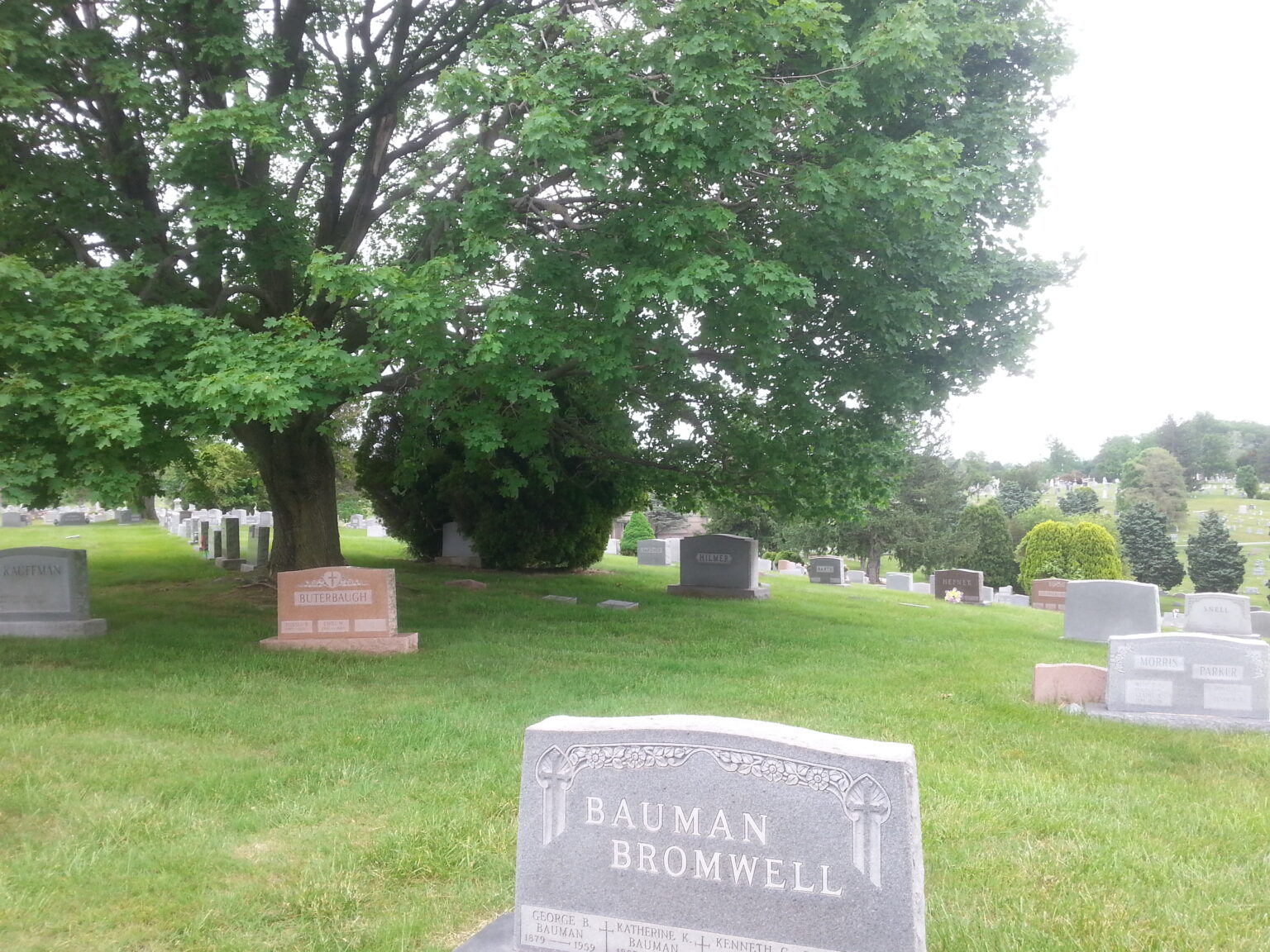
I brought a miniature American flag and planted it next to my grandfather’s stone. He was in the Navy in World War II, and with Memorial Day coming up, it seemed the appropriate thing to do.
(The flag was given to me last year or the year before at Dallastown’s Memorial Day parade. Kids come through the crowd handing them out.)
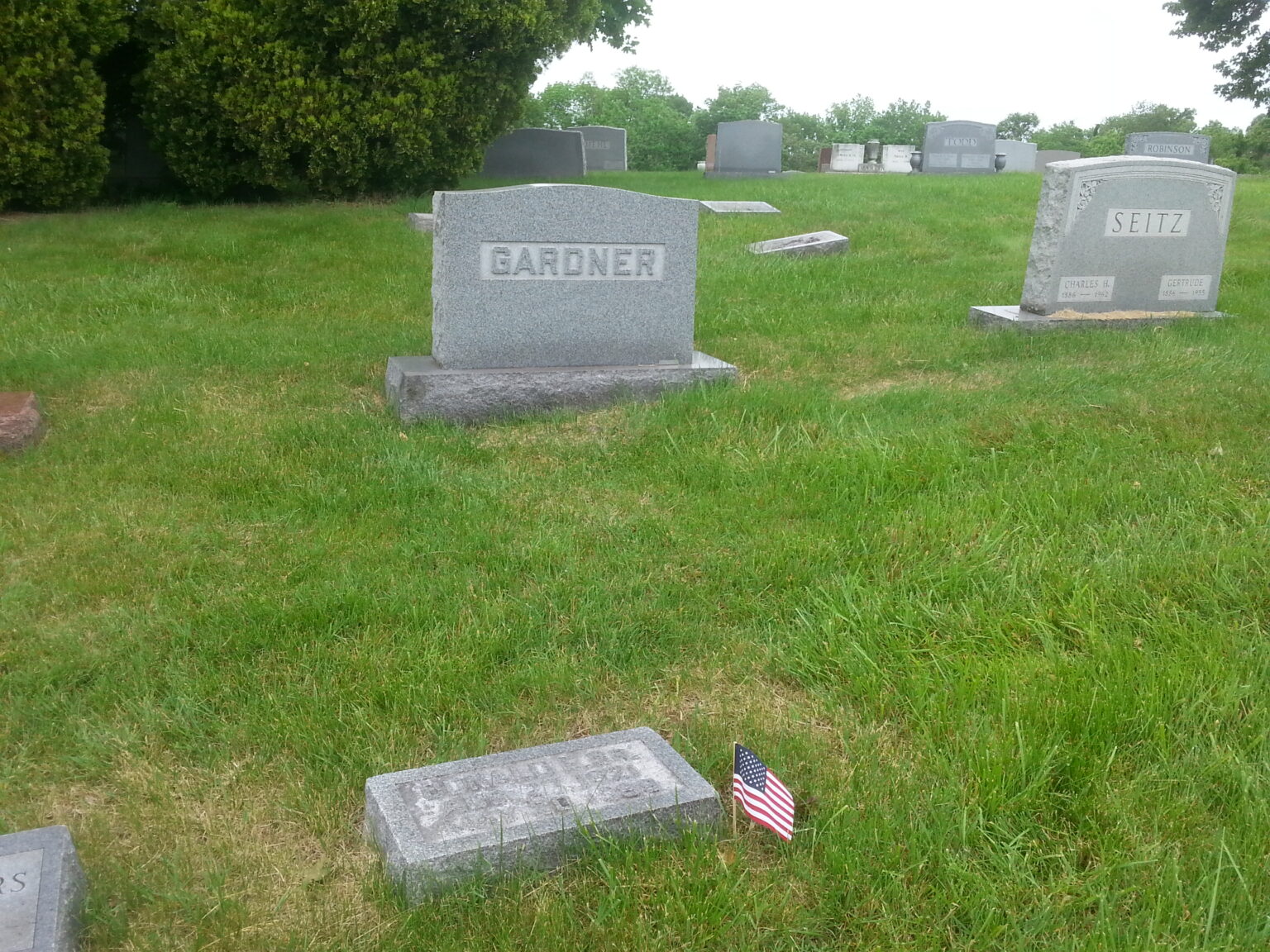
Another look at my grandparents’ gravesite.
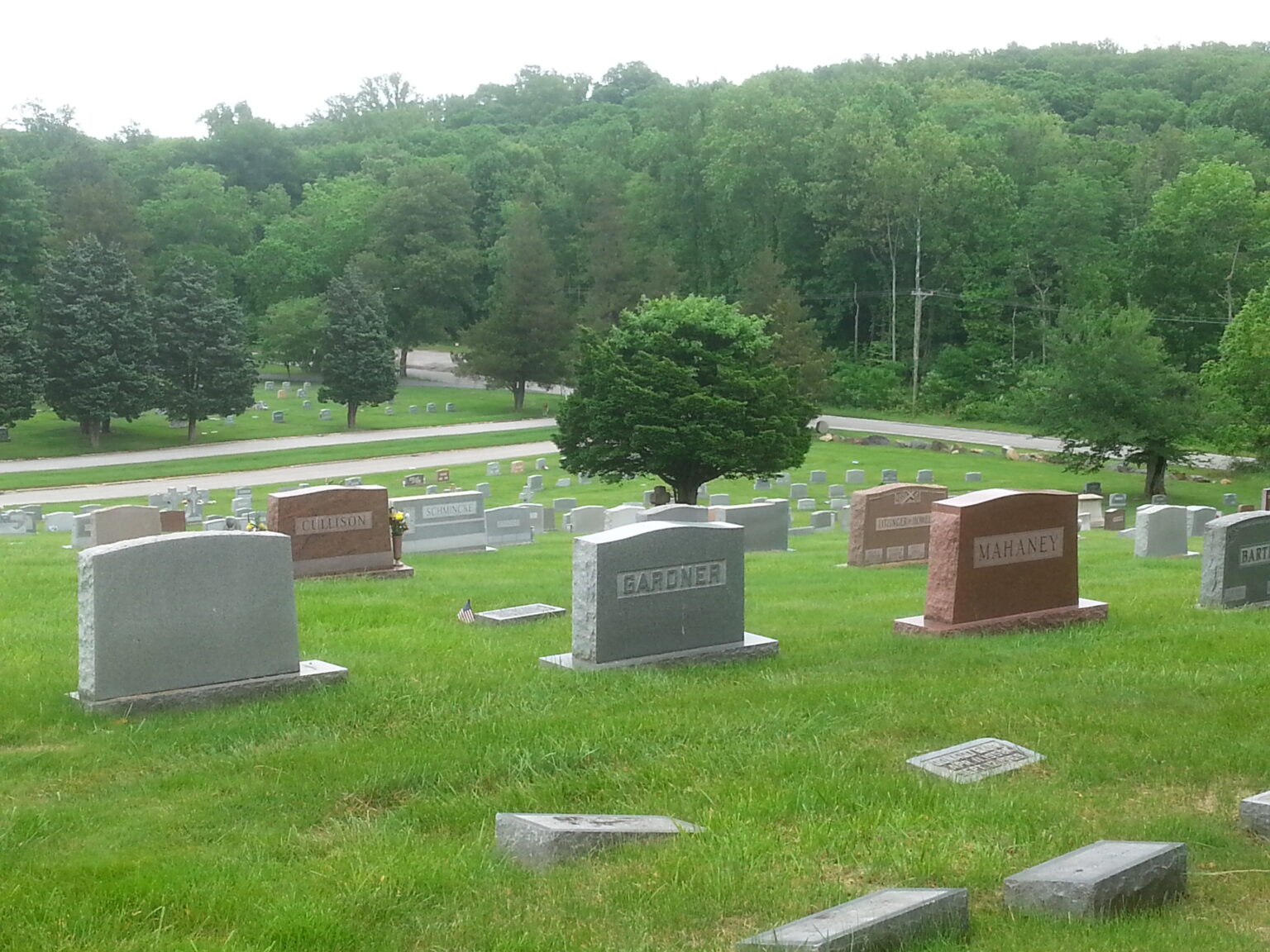
I trusted to Google Navigate to get from one cemetery (Lorraine Park) to another (Loudon Park). This was perhaps unwise, as I drove through back roads and an apartment complex to get from Security Boulevard to Wilkens Avenue.
I stopped at the cemetery office and picked up a map of the cemetery — it’s a massive 350 acres, divided into about 50 areas — and the person I talked to was very helpful. I had a couple of names I wanted to look for, I knew (from Find a Grave) the section names for where all but one were, and I was able to figure out from the map where I needed to go.
I was impressed with how well maintained — with one major exception, which I will address in due course — Loudon Park was.
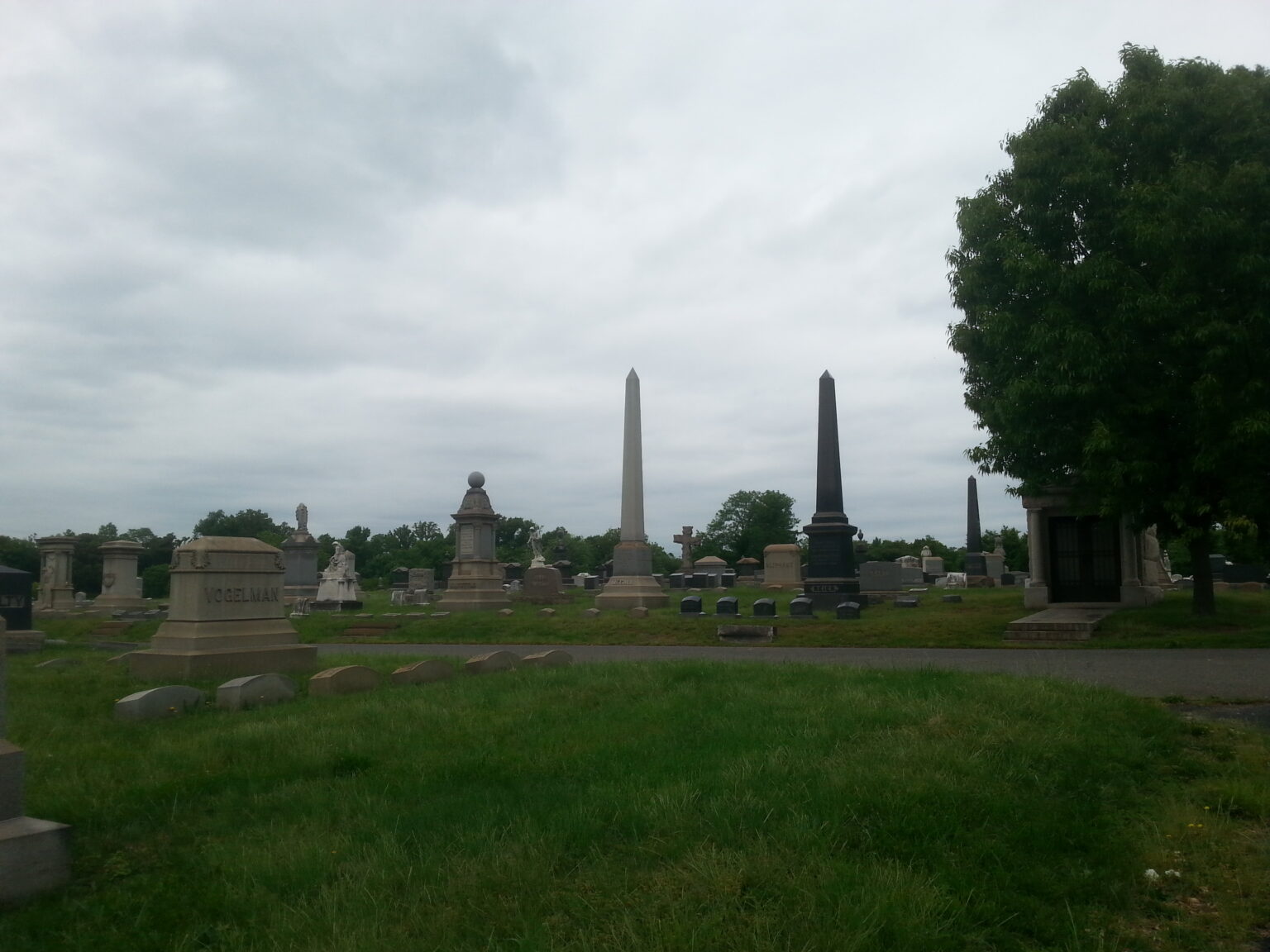
I drove past the gravesite of Allyn Gardner and didn’t even realize it. I was looking for a sign that said “Laurel Hill” — the section of the cemetery where my great-grandfather was buried — only there was no such sign. So when I reached the sign for “Arbutus,” the section past Laurel Hill, I knew I’d driven too far, so I parked the Beetle, got out, turned around, and saw instantly what I was looking for — the Gardner headstone.
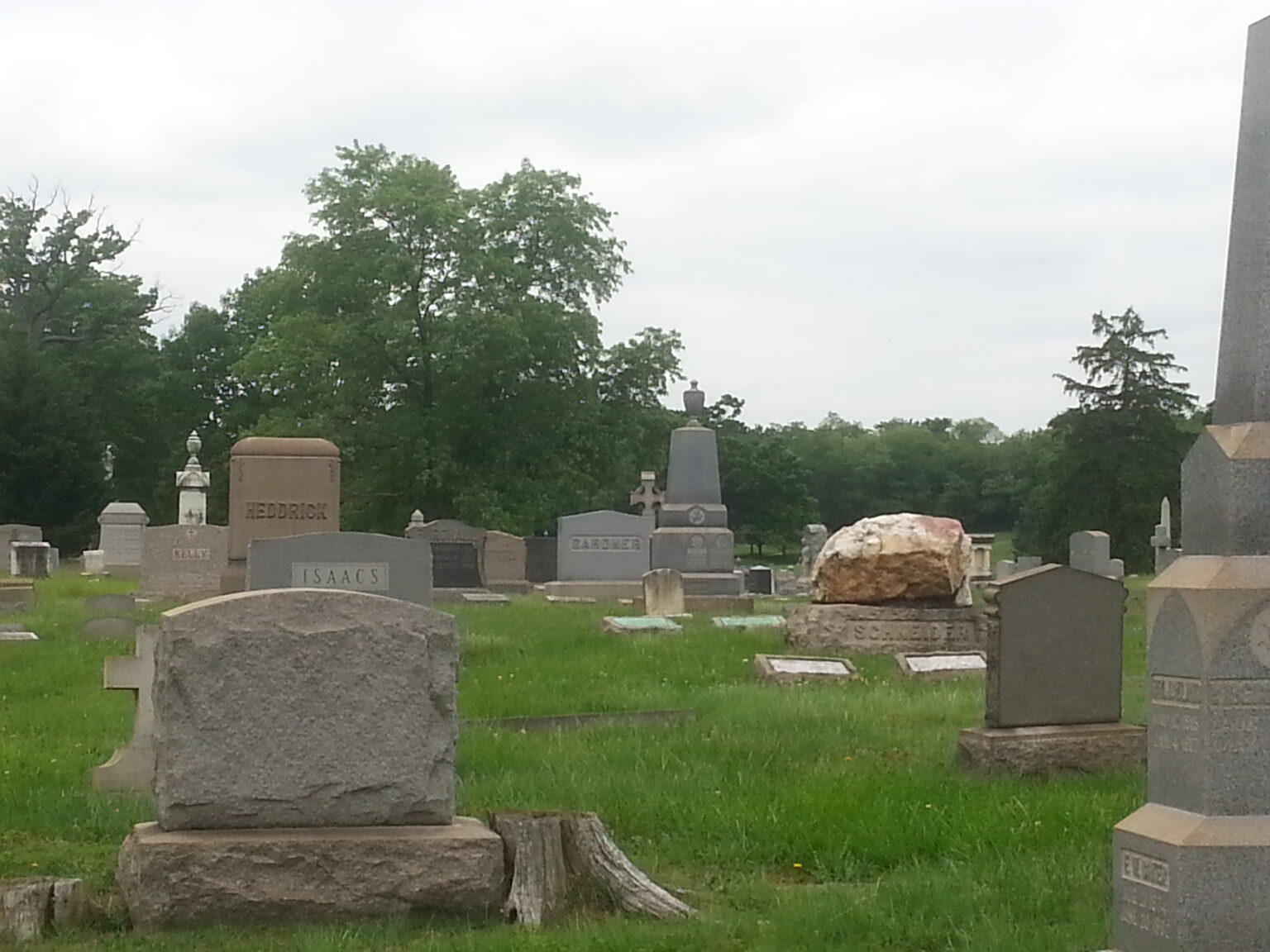
As I said, I’d been here before, but it had been eighteen years. I remembered roughly what things looked like. I remembered the big headstone.
Three closer stones mark my great-grandfather Allyn, my great-grandmother Caroline, and their daughter Ethel (who died at the age of 10).
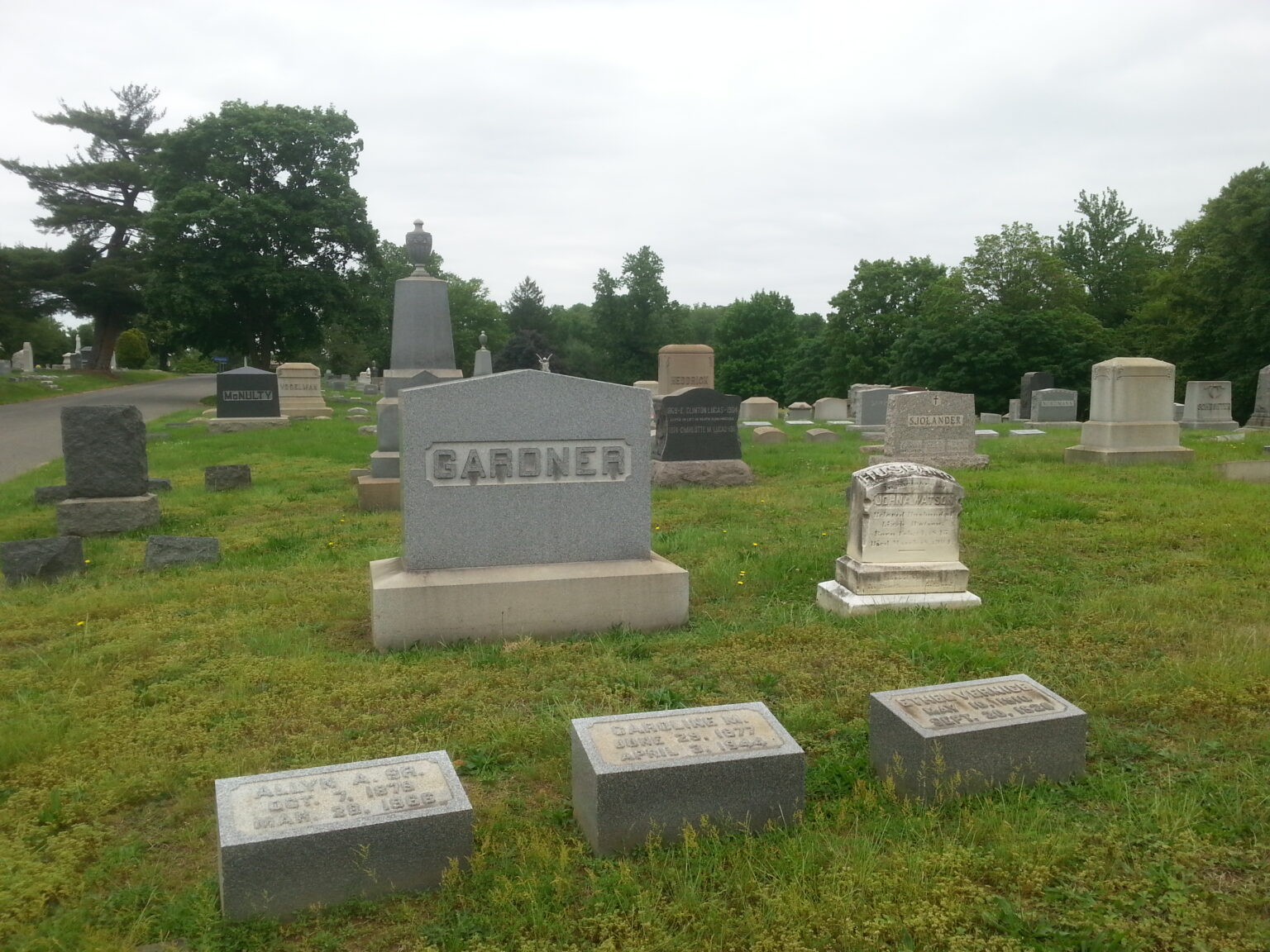
On the opposite side, Allyn and Caroline’s eldest children, Allyn and Naomi. Allyn died in 1941 (of tuberculosis, I believe), Naomi in 1950 (of throat cancer, I think, as she was a heavy smoker).
Naomi was born on her mother’s twenty-fifth birthday. Not something I knew until I looked at the stones.
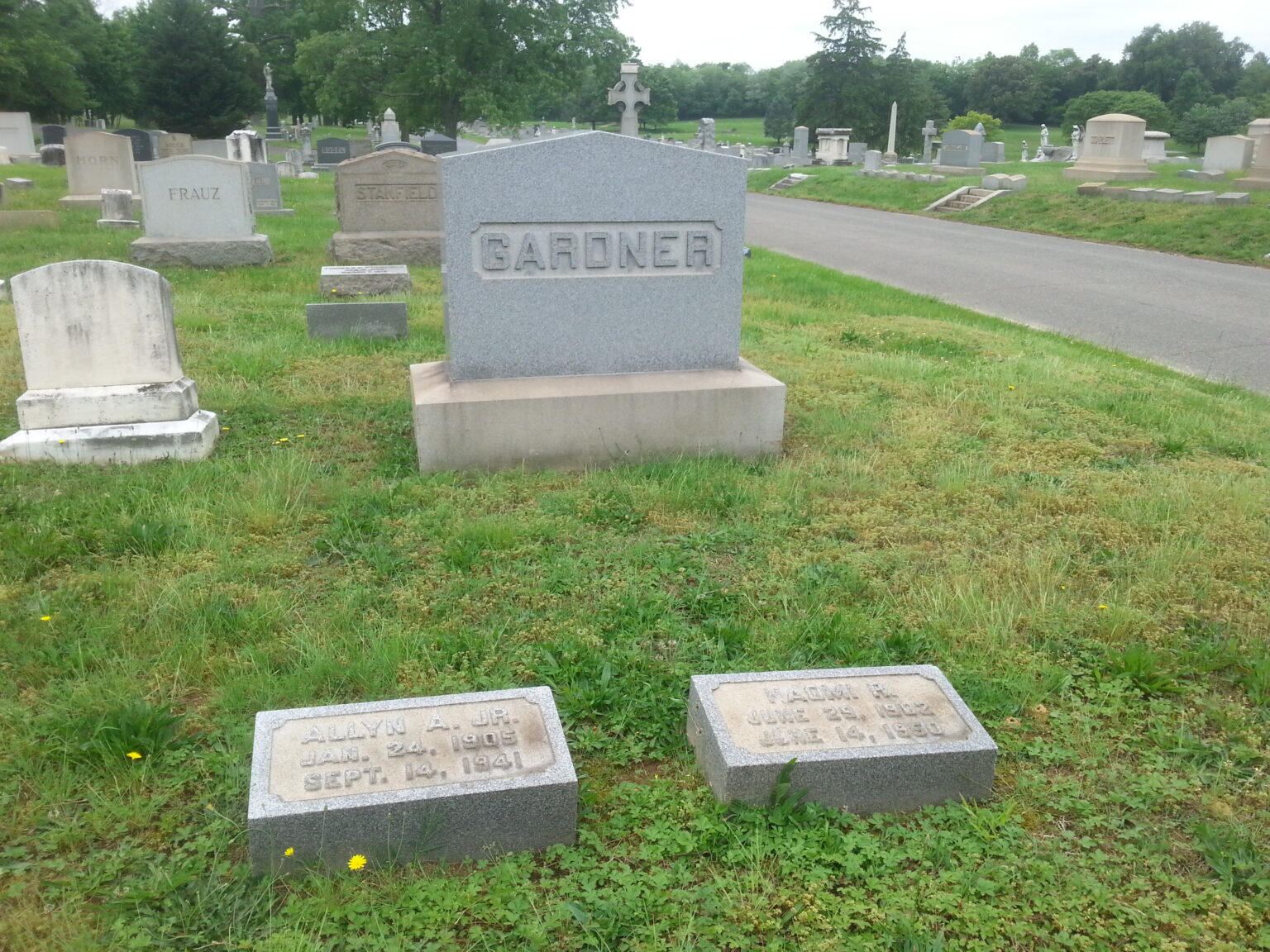
There were two things that struck me at Loudon Park.
First, how packed in the place was; these graves were tight.
Second, the words “Gilded Age” kept going through my head. There’s something about the place that screamed “late 1890s and money” to me.
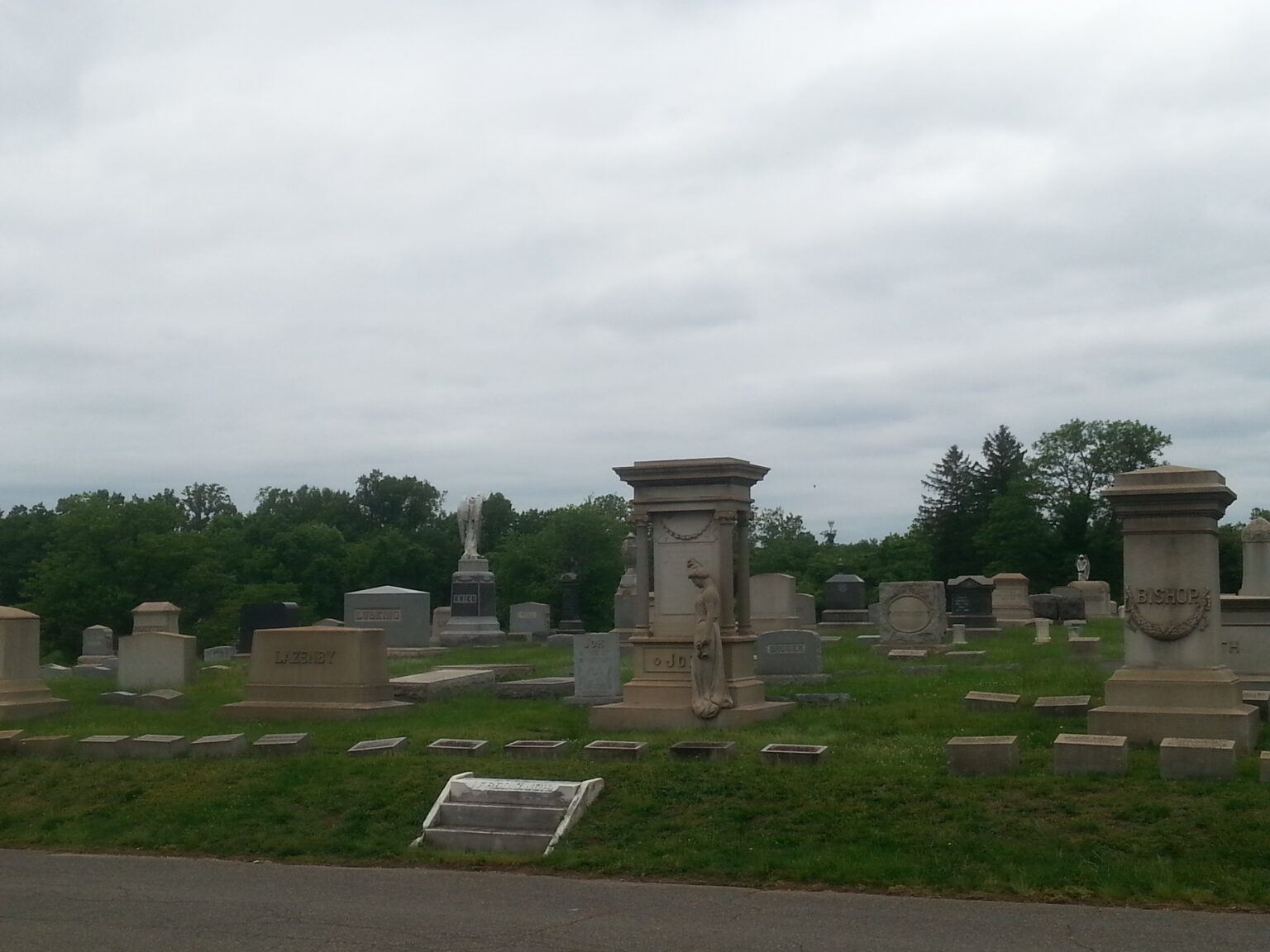
I wandered around. I knew that one of Allyn’s older brothers — Arthur — was buried at Loudon Park, but I didn’t know which section of the cemetery. However, thanks to Find a Grave, I know what the headstones for Arthur and his wife look like, so I kept an eye out for them. I realized that I was searching for a needle in a 350 acre haystack, but what else could I do?
“So!” I said, “I’ll walk in this direction and see what I find.”
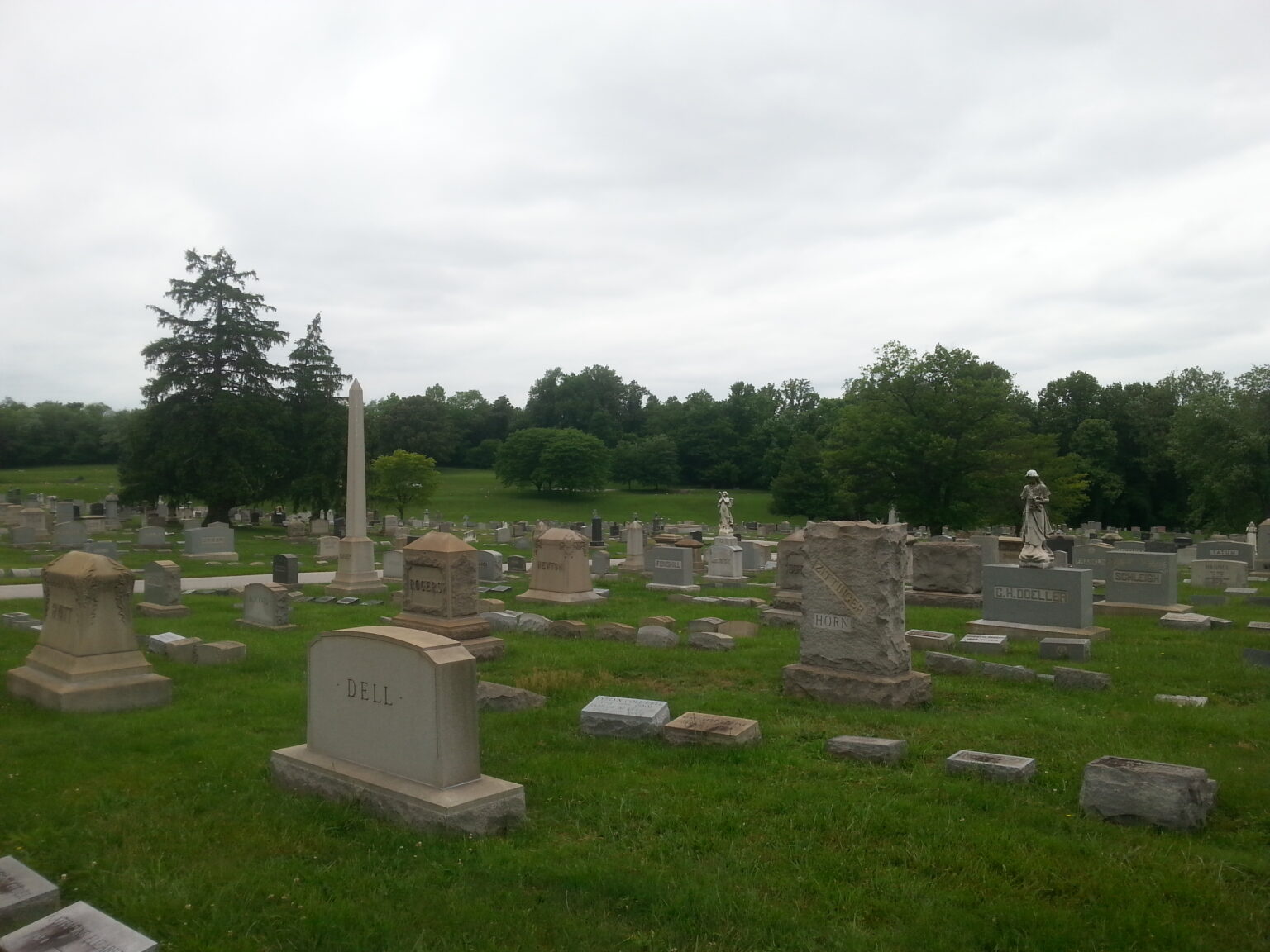
I did not find the grave of Arthur Gardner.
Instead, I found the grave of Allyn and Arthur’s brother Maurice. (Allyn named his second son after Arthur and Maurice — their middle names were Mervyn and Oliver — which were then combined.)
I had absolutely no idea this was here — it hadn’t come up in my searches on Find a Grave, and I double-checked this morning, and it is not there — but when I turned around and saw it, I knew instantly who it was.
It’s completely improbable that I could walk down a hill in a cemetery I had only visited once and find something that I didn’t know was going to be there, and yet it’s absolutely true.
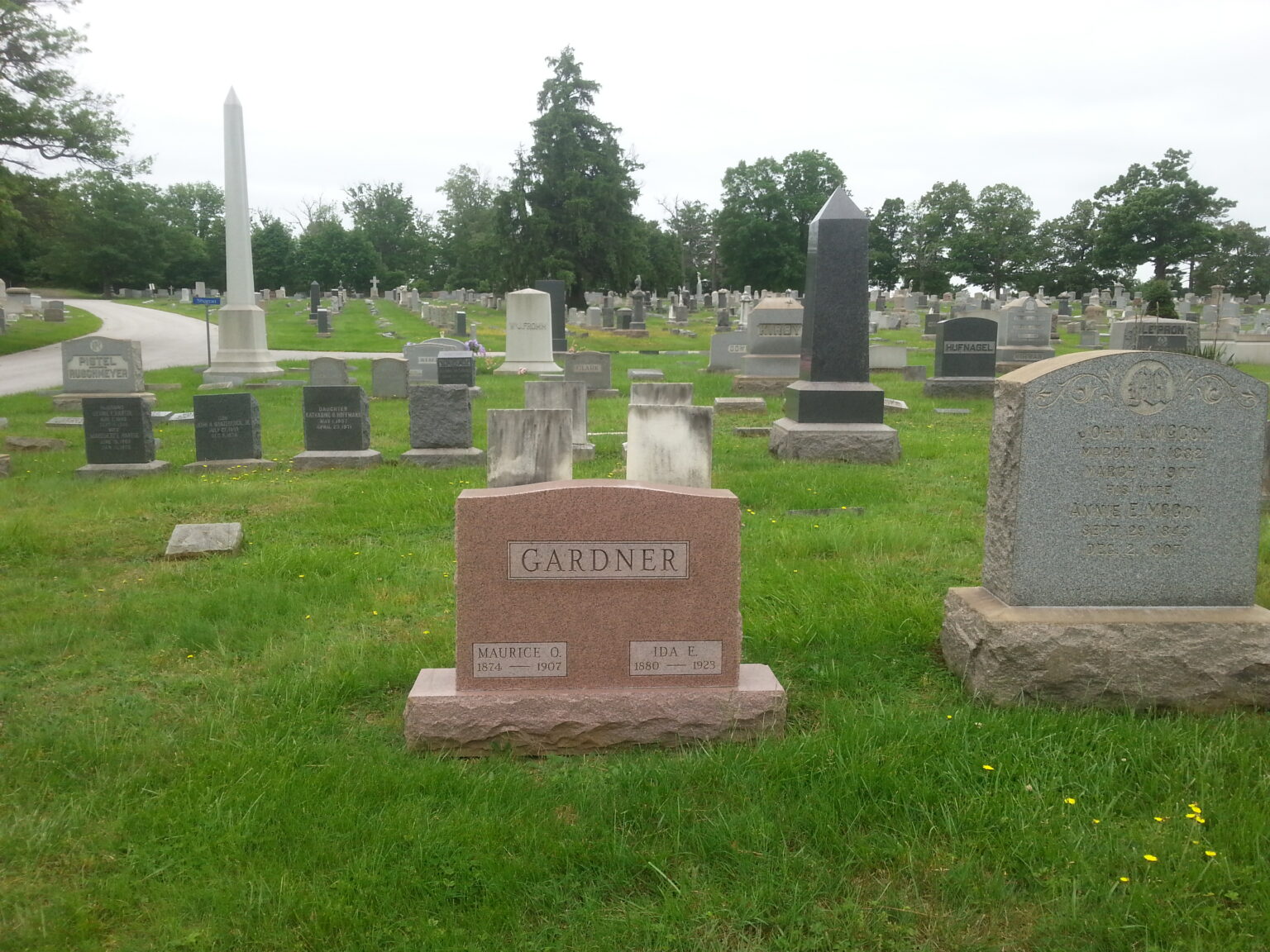
The opposite side of Maurice Gardner’s headstone belongs to Lorena and Harry Ball.
I assume that Lorena Ball was the daughter of Maurice and Ida Gardner. The reason for such an assumption? The headstone is of a vintage that does not suggest it dates back to 1907 (Maurice’s death date) or 1923 (Ida’s death date). Ergo, I assume that the Balls had it installed (either the grave was unmarked originally or it was a replacement for something older) when they reached their own advanced years and wanted to be buried there with Lorena’s parents.
Randomly walking, then, hoping to spot the headstone for Arthur Gardner and wife Atlantic (I’m assuming that’s right, because that’s what the Census paperwork says), I didn’t find them but I found Arthur’s brother, who I didn’t even know was there. My feeling, nearly twenty-four hours later remains, “That is a thing that happened.”
Keep Arthur and Maurice in mind. We will return to them in time.
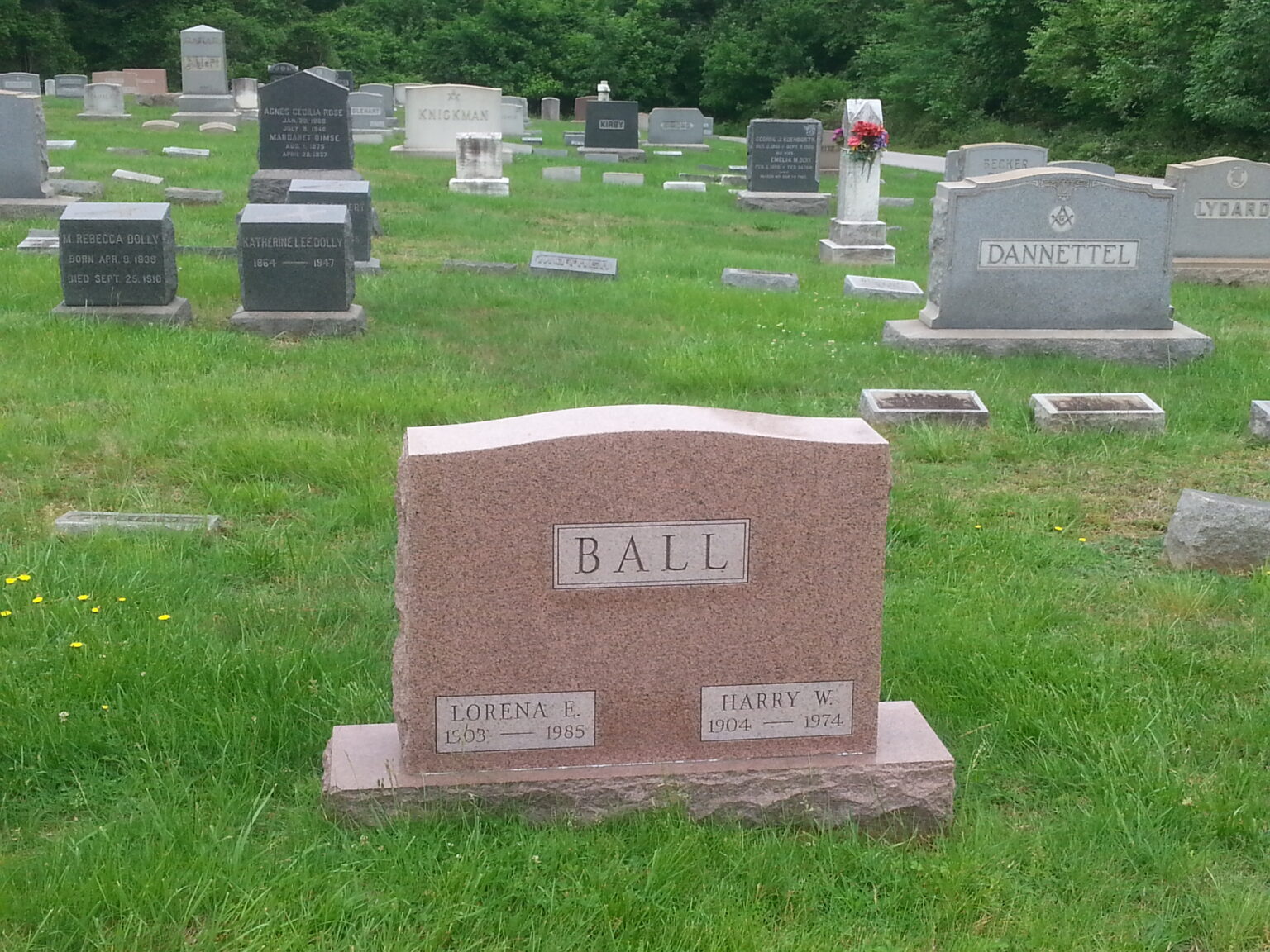
The one way that Loudon Park was not well-maintained: the cemetery suffered an infestation of groundhogs. I could see their tunnels all over the place. They tend to dig under the headstones; I’d walk past a grave and see a giant orifice next to a stone. I had to watch my step in places lest I break my ankle.
One groundhog came out to look at me while I looked at him.
We will return to this, too.
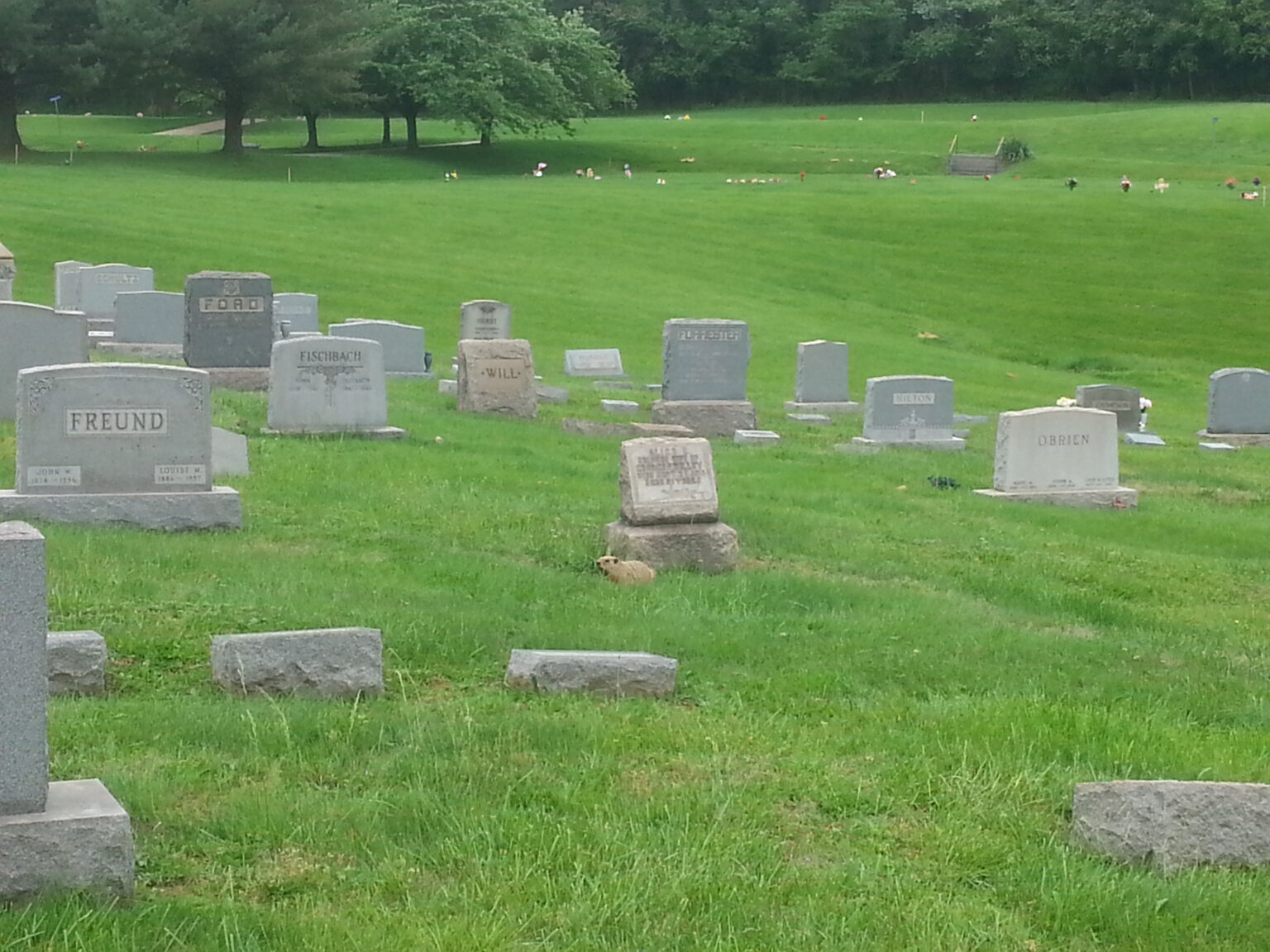
There are some absolutely fascinating structures at Loudon Park. This is the Wilkens mausoleum.
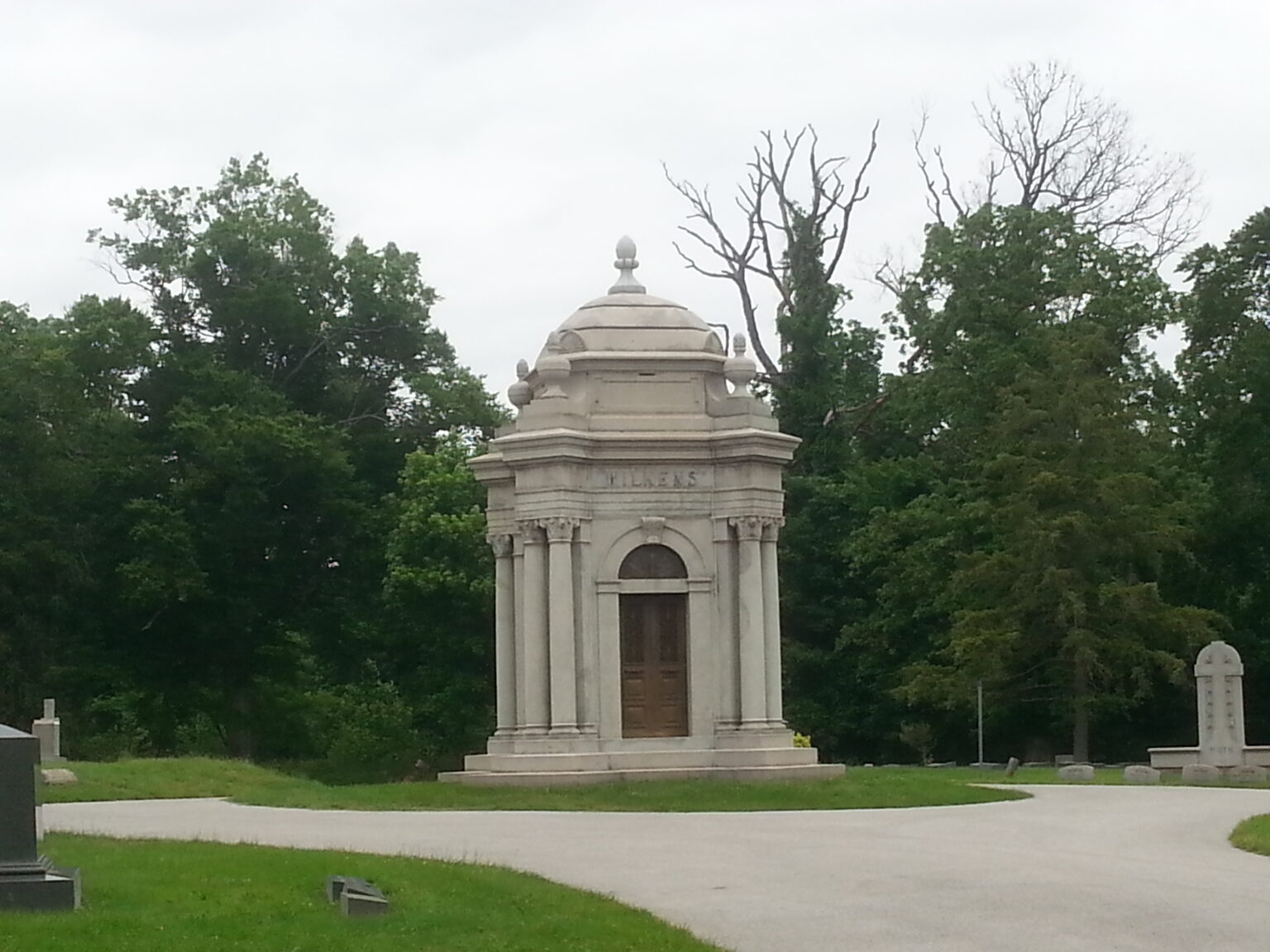
I had no idea how big Loudon Park Cemetery was. You hear “350 acres,” and the brain doesn’t quite comprehend. You walk it, like where I was near my great-grandfather’s grave? It doesn’t seem that big. But I needed to go to a section called “Whatcoat,” and I had to drive there.
I drove past graves, graves, and more graves, and then I went through another gate, and there were even more. This part of the cemetery looked different, older.
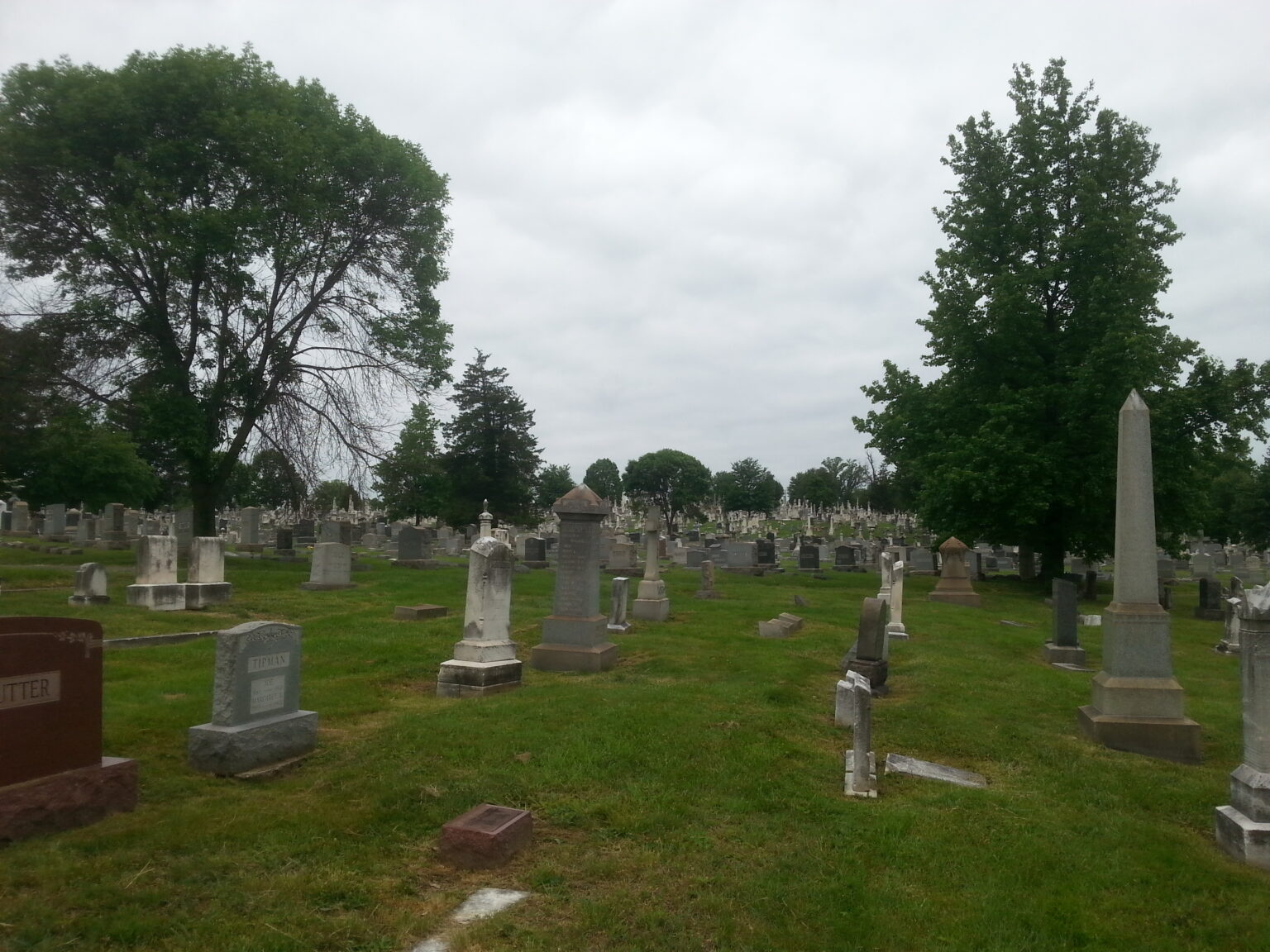
The graves go on what seems like forever. Judging by the map, they continue on over the hill.
I could spend literal days exploring here. But I didn’t have days. Maybe someday I will.
Instead, I came to find one very specific thing, at the bottom of the hill, near where I parked my Beetle.
I came to find my great-great-grandmother Susan, the mother of my great-grandfather Allyn. Her second husband, Allyn’s father, is buried in an unmarked grave in Washington, DC’s Congressional Cemetery, and I’ve visited there a few times in the last five years. Susan’s buried here, with one of her daughters.
Also, you can see a headstone that collapsed into a groundhog tunnel.
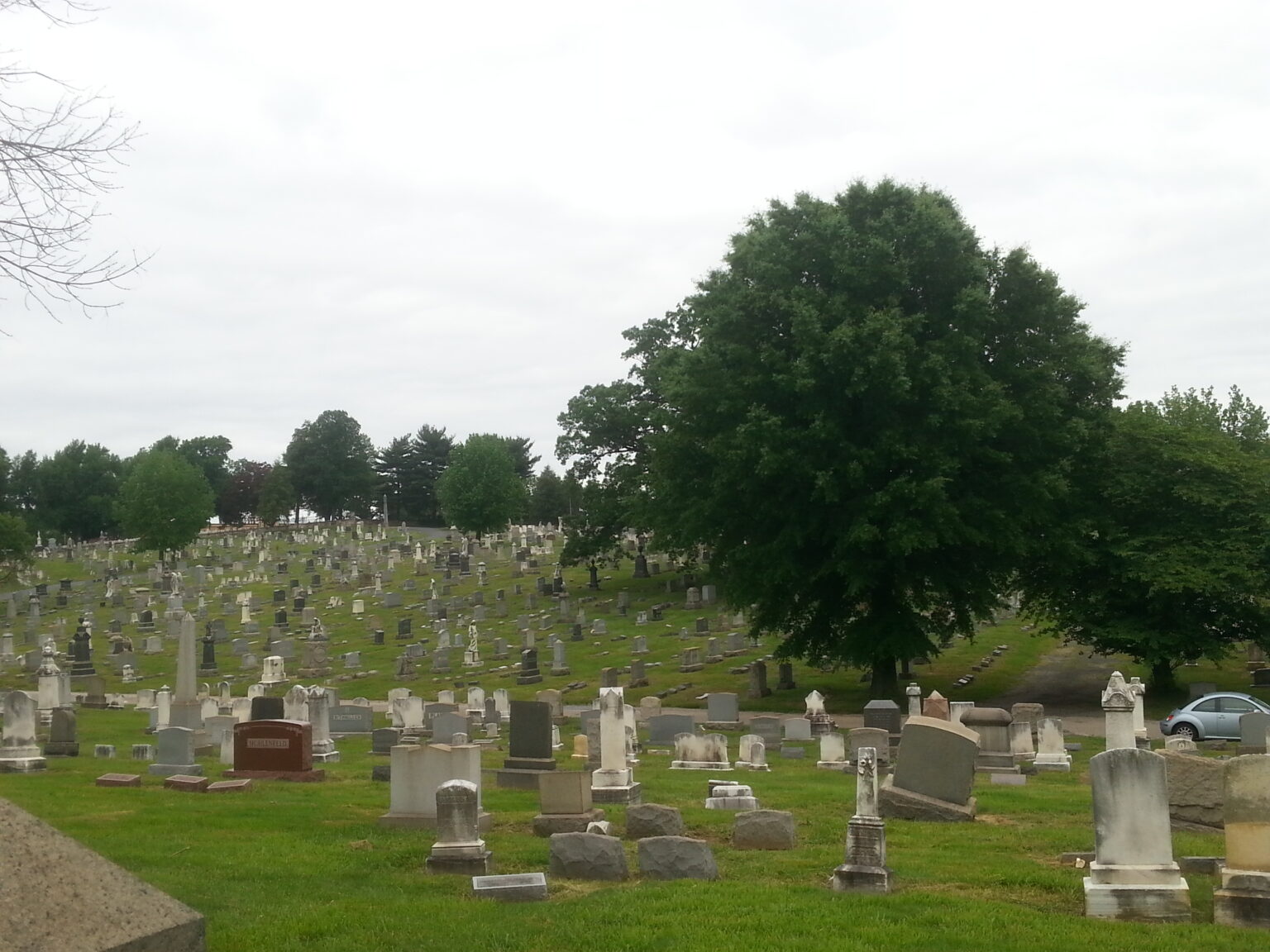
What I was looking for was the Boswell monument. But there’s so much more to it than that.
I’ll start with the important side, the side on the right. because everything else flows out from this.
At top, William Boswell. In the middle, Susan Gardner. With her second husband William, she had a number of children, my great-grandfather Allyn and his siblings, such as the name at bottom, Isabelle, carved here as Isabel. She was married (at least) three times, and so the monument carries the surname from her final marriage, McCleary. It’s from William and Isabelle that a number of cousins I’ve discovered in the last year that I didn’t know I had are descended.
The side on the left belongs to Frank T. Clark. He was married to someone on the other two sides of the monument.
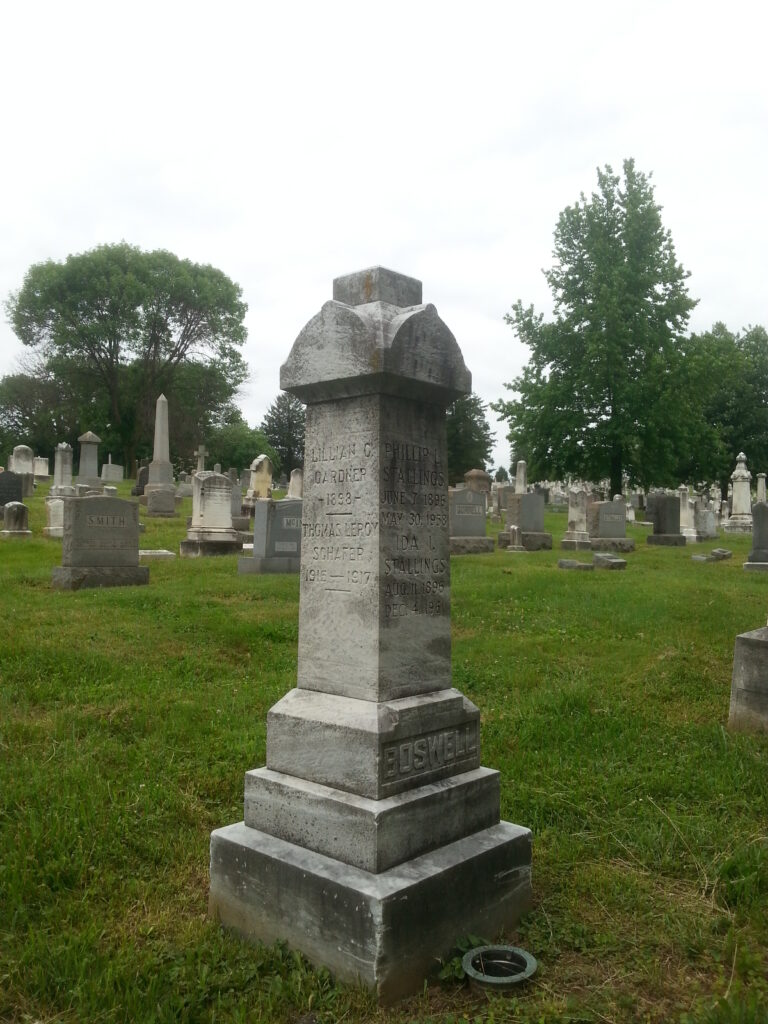
On the other side of the Boswell monument, I’ll start with the panel on the right.
At the bottom is Ida Stallings. She was the (youngest?) daughter of William and Isabella, and Frank was her first husband. Phillip Stallings at top was her second.
The left panel puzzles me, because I have no idea who these names belong to.
At top is Lillian Gardner, born and died in 1898. My best guess, and I’m spitballing here, is that she was the daughter of either Maurice or Arthur and, when she died, this was the easiest place for the family to bury her because the plot existed.
At bottom is Thomas Schafer. I don’t have a clue who he belongs to or how he fits into my genealogy. He lived two years, 1915 to 1917. I simply don’t know.
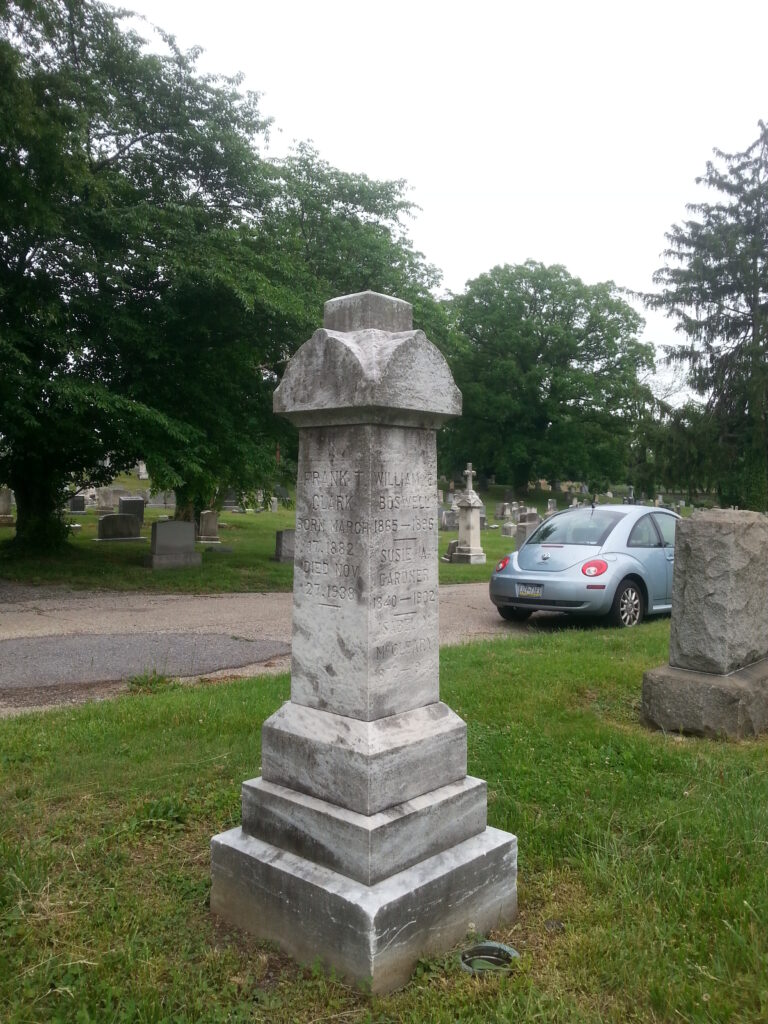
The Boswell monument had a something atop it — a stone cross, an angel — at some point; the post to which it was affixed is quite obvious.
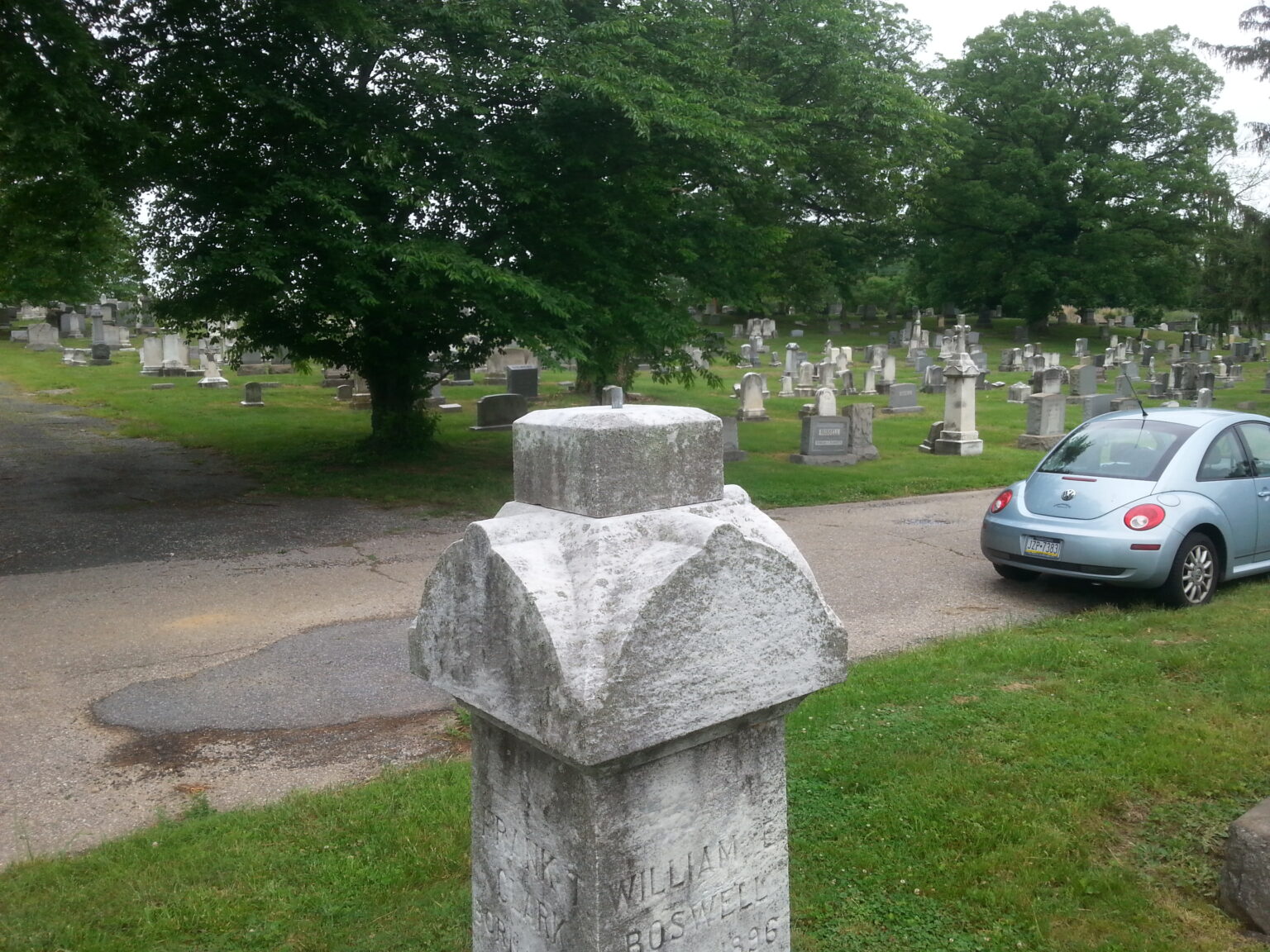
It was also notable that the monument has plastic flower holders on two sides; I didn’t notice that for any other grave in the area, and given how modern that would be I assume they were installed in the 60s, perhaps around the time that Ida died.
I mentioned when I began that I do this “thing” when I visit the grave of someone I’m related to where I’ll put my hand on the ground. Here’s my explanation.
There’s a saying, or sort of a saying, that I’ve variously heard is Japanese or Mexican, that we die three deaths. The first is when our bodies die. The second is when all the people who knew us die, so we are no longer a living memory. And the third is when no one remembers our name even as an abstract and thinks of us.
I know there is nothing in the ground that would be aware that I was there — or even understand who I was even if there were — and that’s fine; cemeteries aren’t for the dead, for the dead are long past caring. I put my hand on the ground as a kind of unspoken “You’re remembered, even if abstractly,” just to stave off the third death for a little while longer.
I will have to return to Loudon Park once I’ve done more research and uncovered at least the section where Arthur Gardner and his wife might be.
From Loudon Park I drove to Peabody Heights Brewing. Again, I trusted my fate to Google Navigate. I managed to make it in one piece.
Peabody Heights Brewing is built on the site of Oriole Park, specifically one baseball historians call “Oriole Park V,” to differentiate it from the other parks that shared the “Oriole Park” name. Originally built for the Federal League Baltimore Terrapins in 1914 and called “Terrapin Park,” the ballpark was then used by the International League Baltimore Orioles from 1916 to 1944, when the park was destroyed by fire. Oriole Park was an all-wood ballpark and, after a game on July 3, 1944, a lit cigarette smoldered and eventually started a blaze that razed the park in about half an hour. The only parts of the park to survive were the scoreboard and part of the left field wall; that left field wall was the only part of the park that was made of brick, and that wall still stands.
In the tasting room there’s a small museum about Baltimore baseball history (specifically, Oriole Park, the International League Orioles, and the Negro League Elite Giants), and that tasting room sits roughly left field would have been. They even do a tour in which the owner explains the history of Oriole Park, and you can see where second base was (it’s among the brewing apparatus).
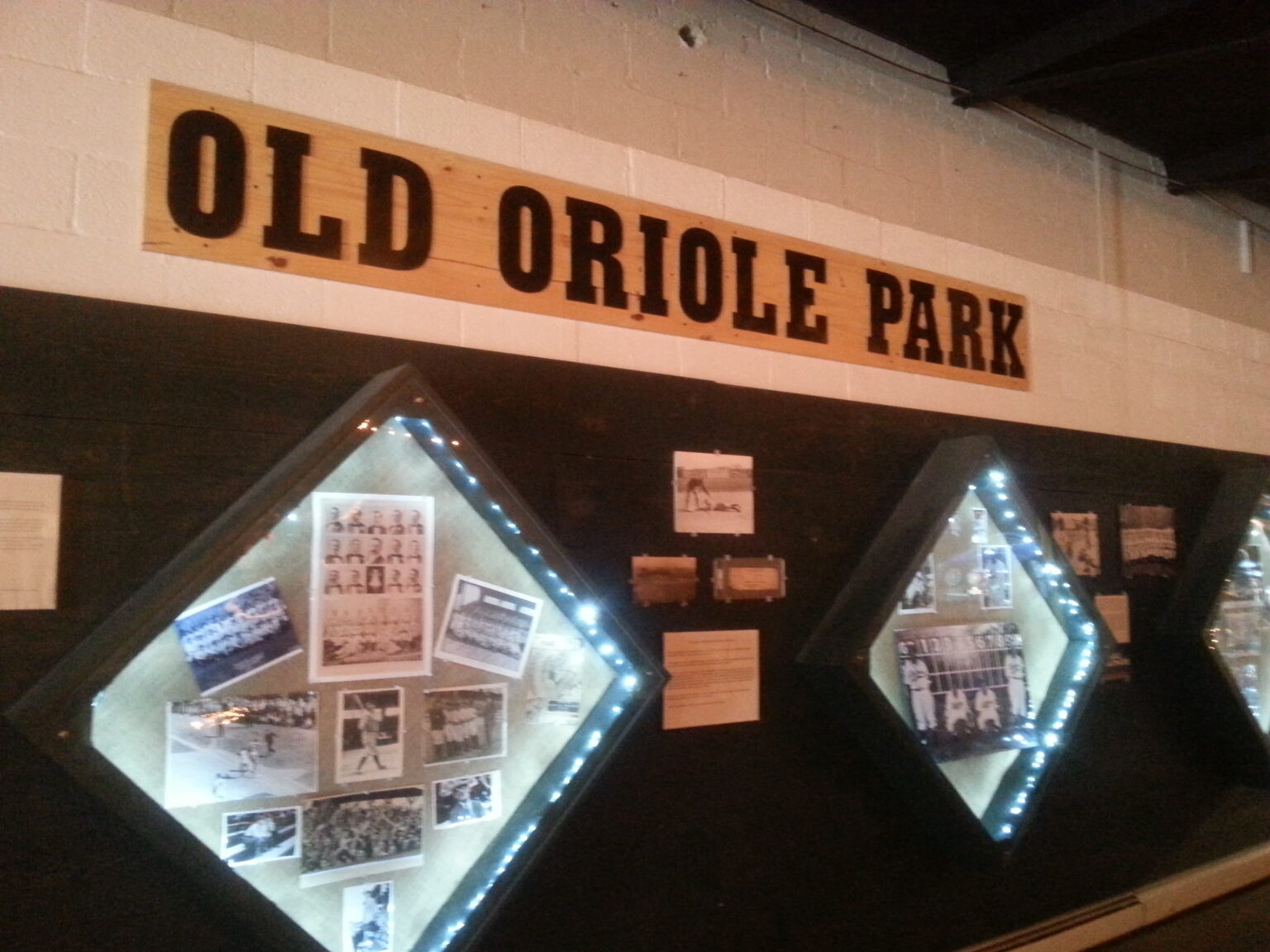
The owner explained in the tour that, since the brewery sits on the site of the old ballpark, they wanted to name a beer after the park, hence Old Oriole Park. They wanted to ask Peter Angelos for permission, and somehow a message got to him, and Angelos’ response apparently was, “Well, I guess I won’t sue.”
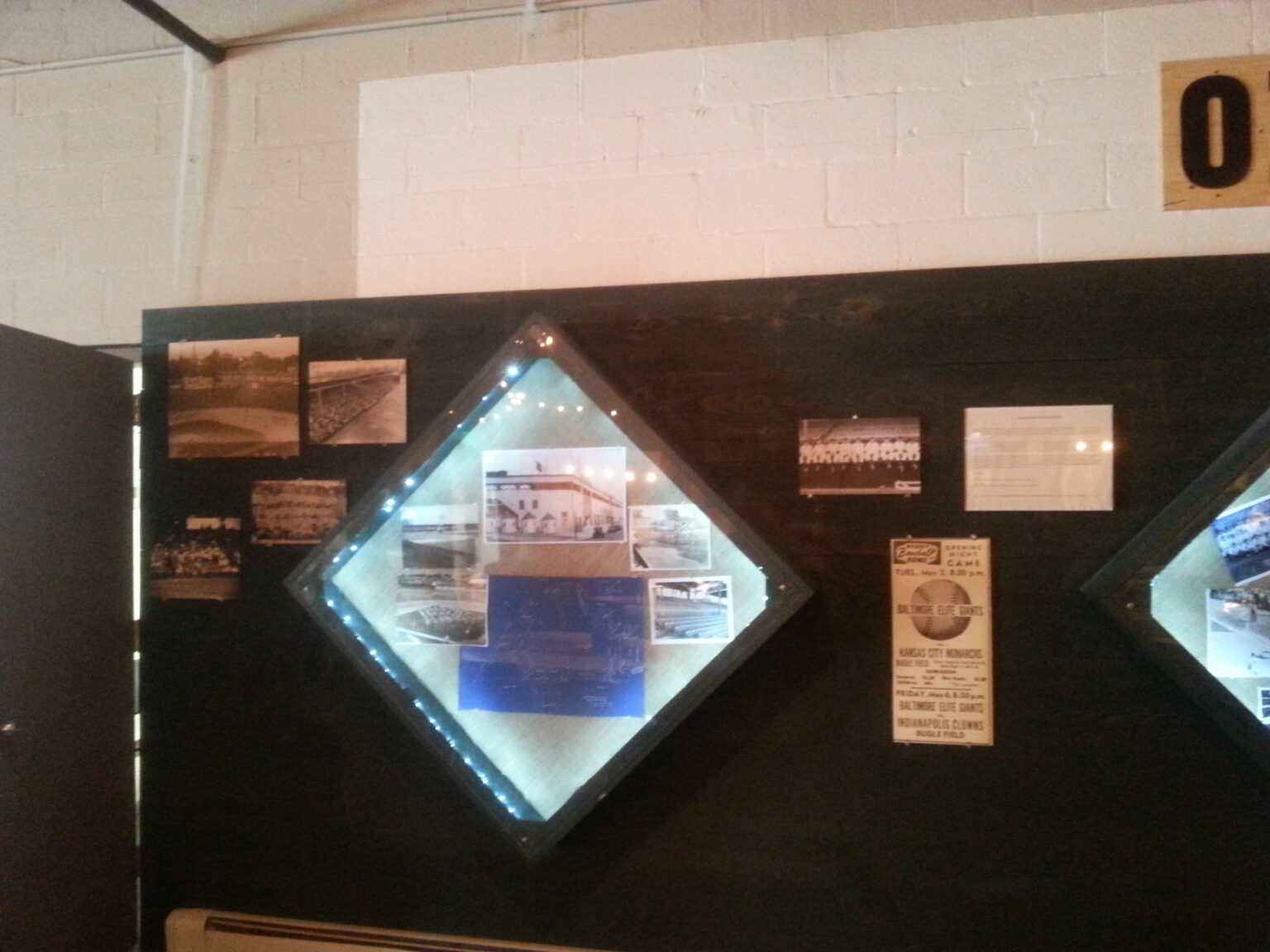
They make a Bohemian (“Baltimore loves its Bohemian beers,” said the owner during the tour) and a stout, even a margarita IPA, as well as several other beers that don’t have the Old Oriole Park label. They also make Raven Beer (the beer with the Edgar Allan Poe labels) under contract.
I bought their stout — Baltimore may love Bohemians, but I love my beers dark and heavy — and I bought it as much for the bottle (a label with a vintage baseball photograph) and the history behind the place as for the beer itself.
If you like craft breweries and baseball history, Peabody Heights is worth the visit.
So I visited two cemeteries, found things I didn’t expect to find, and drank beer. All in all, I had a nice outing. 🙂
